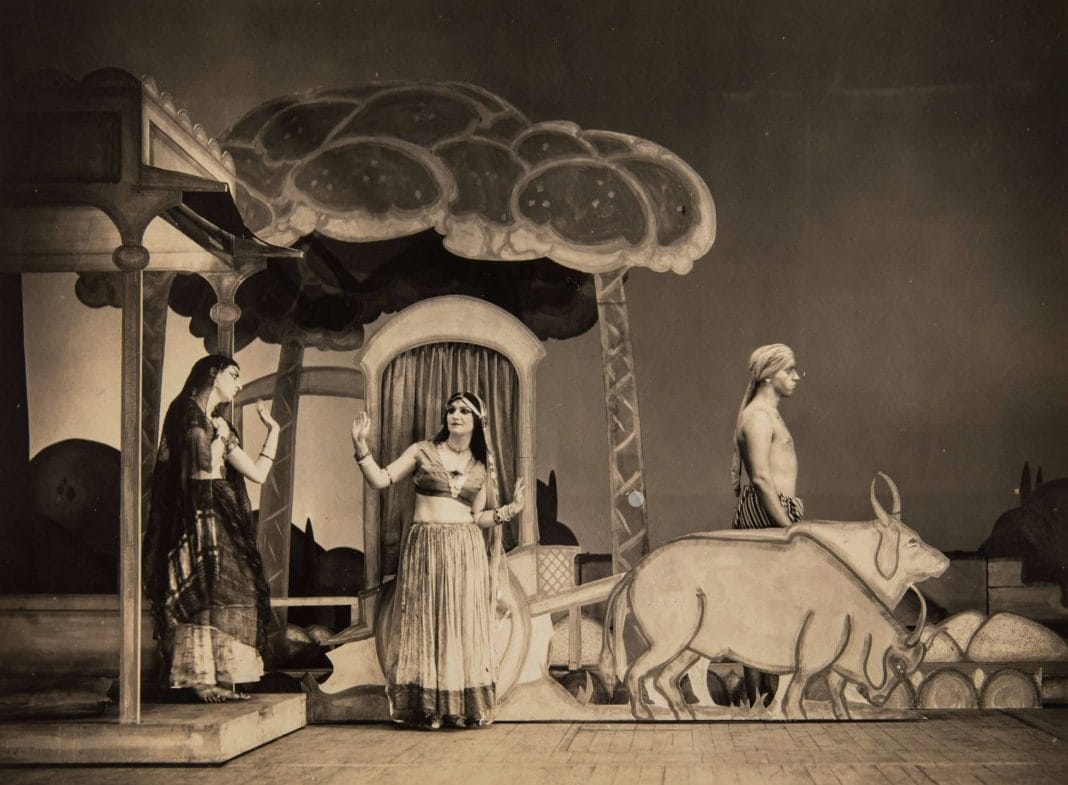Building on a strong recent tradition of plays performed in Sanskrit (with surtitles!) we are delighted to present this beautiful drama from ancient India, performed by students and academics in Sanskrit, South-Asian studies, and related fields, and open to a diverse audience of school students, academics, and the public in general – it will be both richly entertaining and educational. Last year, we put on the Mālatīmādhava (the Tale of Mālati and Mādhava), a very successful production which sold out almost as soon as booking had opened.
We meet Cārudatta, a now-impoverished brahmin renowned for his virtue and honesty – so much so that despite his fall from wealth, he is still visited for his advice and counsel by a lofty clientele. He is the hero of the play, and though happily married with a wife and son, he is deeply in love with its heroine, the famed and beautiful courtesan, Vasantasenā.
Vasantasenā is in love with him in turn, but we see her fall victim to a terrible crime, and Cārudatta take the blame for it. Behind all of this, however, lies the heinous prince Śakāra, who also loves Vasantasenā and is furious with her for spurning his advances.
The play is full of political intrigue, subterfuge, romance, and high emotions, but also interspersed with a light comic touch. Vasantasenā is en route to a romantic rendezvous with Cārudatta and meets his son Rohasena, who is in floods of tears. As it turns out, his wealthy neighbor’s son has a solid gold toy cart, which he used to let Rohasena play with. Now, however, he has started to shun poor little Rohasena, who has only his Little Clay Cart (from which the play takes its name) to play with.
Vasantasenā takes pity on him, piles all her jewelry on the cart – rich, elaborate necklaces and bangles in gold and gems – and goes on her way. It is not Cārudatta she will encounter, however…
The play does not only function as fantastic entertainment, but also serves the vital purpose of bringing to life our knowledge of Sanskrit and of ancient India. Following in the footsteps of our previous Sanskrit Plays, and of course inspired by last term’s incredible Ancient Greek Play, the Orestes, we believe there is nothing like performing ancient texts in their own languages for inspiring students and scholars of those languages, and attracting public interest in the wealth of literature they have to offer, and their original performance traditions. It will be in Sanskrit (and Prakrit, as was the tradition in Sanskrit drama), but we aim to make this as accessible to all comers, from the expert to the curious, through informative programme notes, and clear surtitles throughout.
It also offers us an opportunity to understand sides of the dramatic tradition which we never encounter through the text alone. Sanskrit drama was very musical, for instance, and our performance will feature musicians rigorously trained in traditional Indian music, and a beautiful musical interlude in the middle of the play. My own role has largely related to the props and costuming; the other costumers and I have poured days of research into the clothing depicted in the Ajanta caves, the most copious source of information on the attire of the 5th Century AD, when this play was likely written. Their patterning was incredibly rich, and Indian dyes had been renowned even in the early Roman empire and far beyond for their vibrant colours and consistency. They will provide a vivid and visually appealing spectacle for the audience. It has been a joy to design these costumes, liaising with peers and tailors in India to get the materials we need.
The play will offer a unique opportunity to see an
ancient drama come to life before your eyes, and to
witness the rare combination of ancient languages,
music, and costume. Tickets will be free, so don’t
miss out…
The Little Clay Cart will show on 15th-16th Mar-
ch, 19:30, at St John’s Auditorium.


